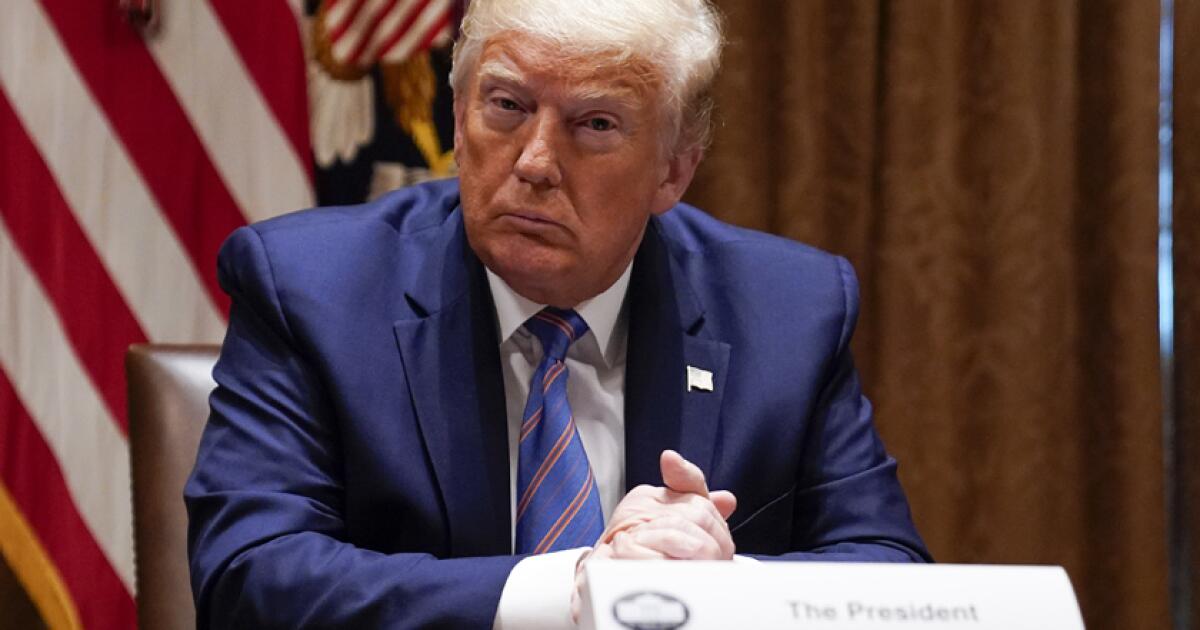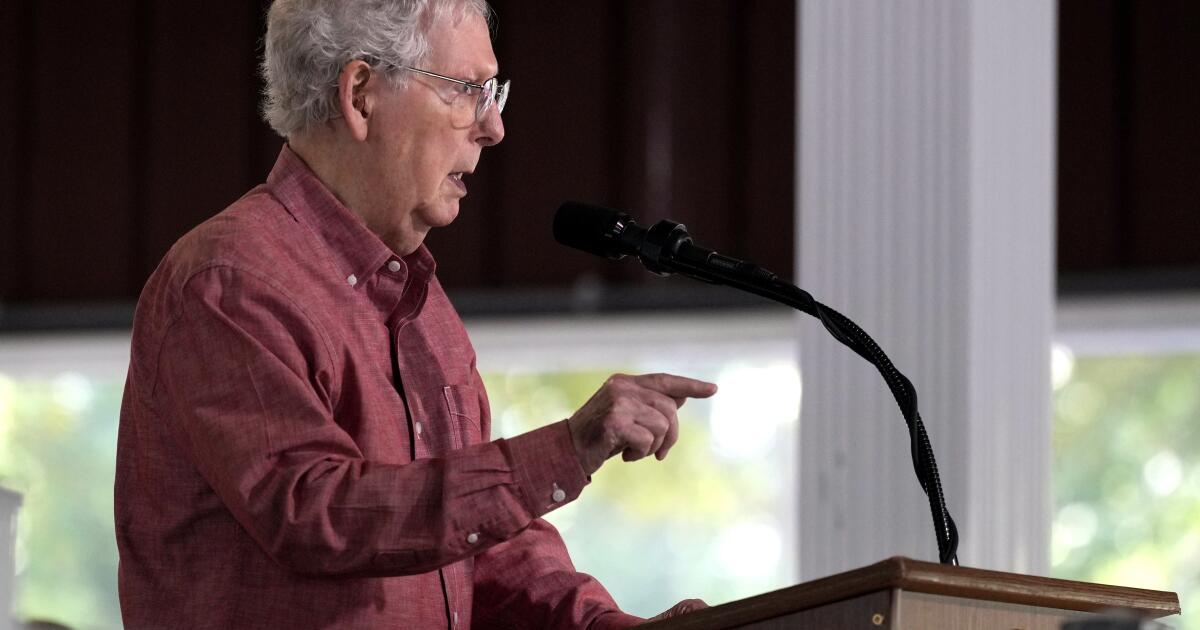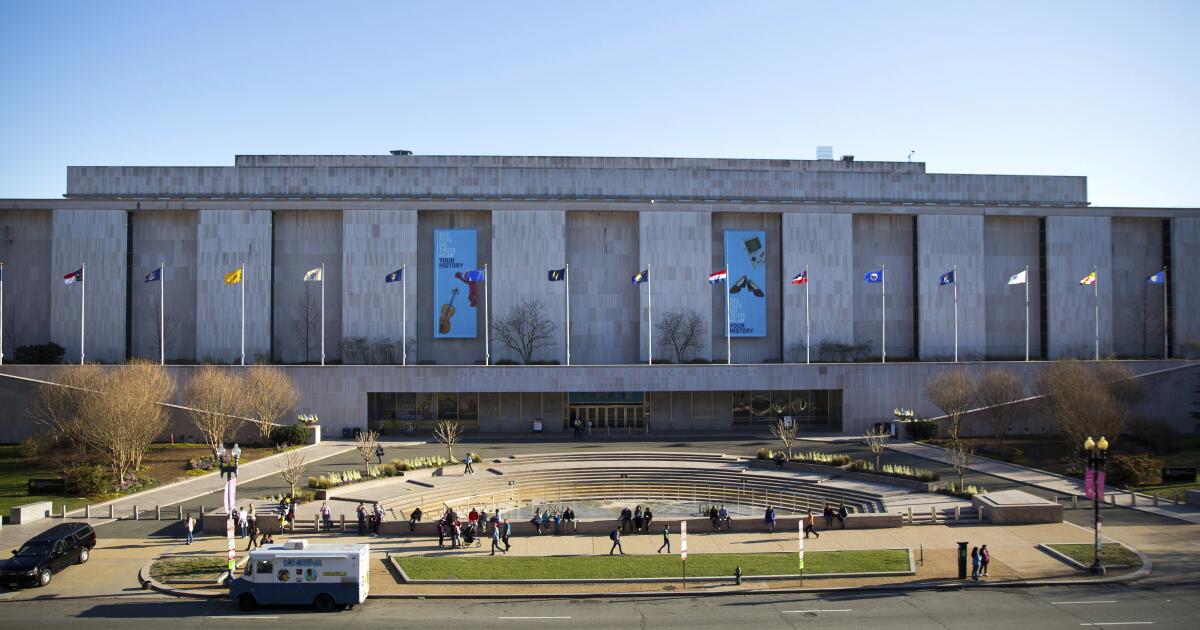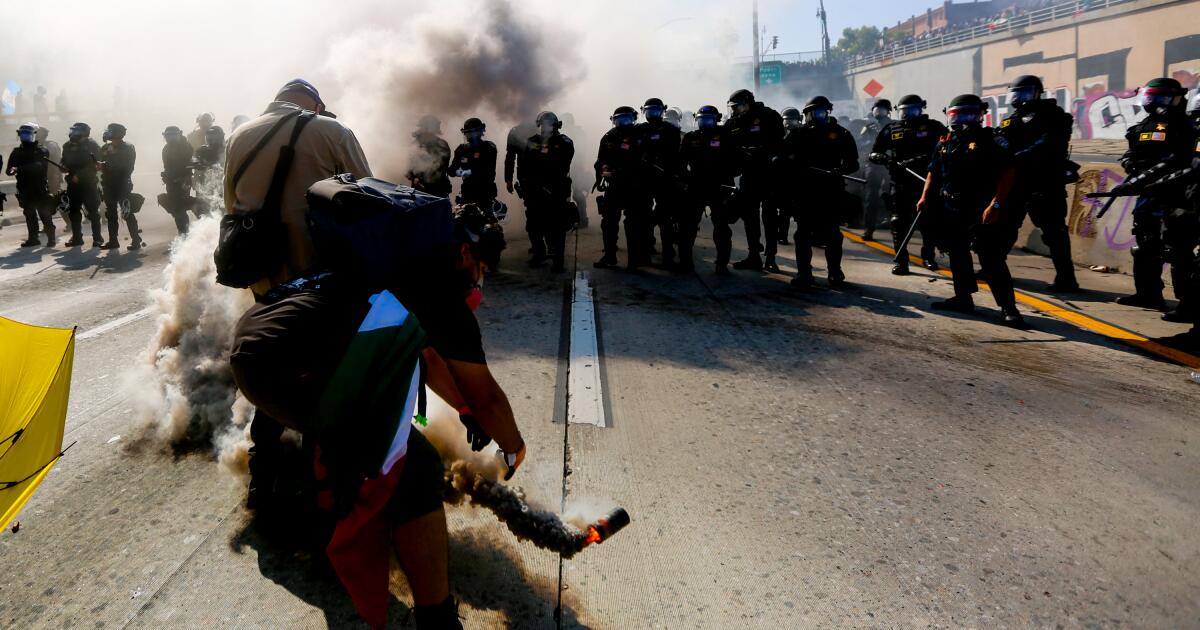Trump expands crusade against ‘woke’ to museums across the country
President Trump on Tuesday said he intends to expand his crusade against what he calls “woke” ideology from the Smithsonian Institution to museums across the country.
“The Museums throughout Washington, but all over the Country are, essentially, the last remaining segment of ‘WOKE,’” Trump wrote on Truth Social, adding that the Smithsonian is “out of control,” and that everything featured in its exhibits discuss, “how horrible our Country is, how bad Slavery was, and how unaccomplished the downtrodden have been — Nothing about Success, nothing about Brightness, nothing about the Future.”
To prevent more of the same in other institutions, Trump said he has instructed his attorneys, “to go through the Museums, and start the exact same process that has been done with Colleges and Universities where tremendous progress has been made.”
Contacted for comment, a White House rep said, “President Trump will explore all options and avenues to get the Woke out of the Smithsonian and hold them accountable. He will start with the Smithsonian and then go from there.”
They did not respond to a request for clarification on how the administration intends to vet the content of exhibits at other museums, or whether or not the president intends to issue an executive order with details on a plan.
Trump’s concern about the Smithsonian first became public in late March when he issued an executive order titled “Restoring Truth and Sanity to American History,” which directed Vice President JD Vance to remove “improper ideology” from the Smithsonian’s 21 museums and the National Zoo in Washington, D.C.
Two months later, Trump exerted even greater control when he said he’d fired Kim Sajet, the longtime director of the Smithsonian’s National Portrait Gallery, for being “a highly partisan person, and a strong supporter of DEI.” It soon became apparent that it wasn’t in Trump’s power to do so and Sajet continued to work.
In early June the Smithsonian rejected Trump’s attempt to fire Sajet after a lengthy Board of Regents meeting. The Regents issued a statement stating that the organization’s secretary, Lonnie G. Bunch, “has the support of the Board of Regents in his authority and management of the Smithsonian.” It was implied that Bunch would be the one making personnel decisions, not Trump.
Still, the statement opened the door to the idea that the Smithsonian might make changes that would appease Trump’s criticism.
“To reinforce our nonpartisan stature, the Board of Regents has directed the Secretary to articulate specific expectations to museum directors and staff regarding content in Smithsonian museums, give directors reasonable time to make any needed changes to ensure unbiased content, and to report back to the Board on progress and any needed personnel changes based on success or lack thereof in making the needed changes,” the statement read.
Sajet resigned a few days later, writing in a note to staff, “From the very beginning, my guiding principle has been to put the museum first. Today, I believe that stepping aside is the best way to serve the institution I hold so deeply in my heart.”
Other museums are ringing alarm bells about what it could mean for art and history at large.
The Japanese American National Museum in L.A.’s Little Tokyo recently issued a statement condemning what it called the, “Reshaping of Smithsonian Museums” to fit “the administration’s historical interpretation.”
“These latest attempts to sanitize and reshape history to fit a narrow ideological narrative amount to nothing less than the erasure of history,” said JANM’s President and Chief Executive Ann Burroughs. “We cannot reverse America’s journey toward a more just and equitable future. Museums must be places of truth, not propaganda — spaces where the next generation can confront the complexity of our nation’s injustices, mistakes, and darkest chapters; where empathy, social responsibility, and the courage to defend democracy are nurtured.”
The American Alliance of Museums also recently issued a statement warning of “growing threats of censorship against U.S. museums.”
“In recent months, museums have faced increasing external pressures to modify, remove, or limit exhibitions and programs,” the statement read. “People trust museums because they rely on independent scholarship and research, uphold high professional standards, and embrace open inquiry. When any directive dictates what should or should not be displayed, it risks narrowing the public’s window into evidence, ideas, and a full range of perspectives.
“This is not just a concern for select institutions,” the statement continued. “These pressures can create a chilling effect across the entire museum sector.”





